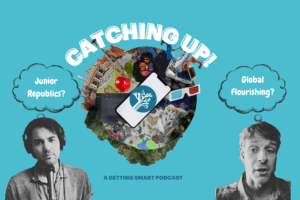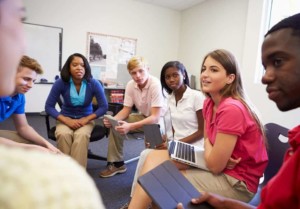5 Best Practices to Globalize Your School

By David Young, CEO, VIF
For decades, national, state and local commissions have called on education leaders to implement a more comprehensive portrait of a college- and career-ready graduate that incorporates the 4 Cs (Communication, Collaboration, Creativity, Critical Thinking); and recently, that portrait also includes global competence, which is best represented by the Partnership for 21st Century Learning’s Framework for State Action on Global Education. The combination of both these approaches stand as a model for what it means to be a well-prepared graduate in today’s rapidly changing, interconnected society.
Although we know what a modern education can and should look like, we struggle to provide equitable opportunities for all students. Global learning experiences in particular stand out as an element of a rigorous education that is common to some students fortunate enough to attend private schools, an affluent public secondary school or a solid university. Yet for the overwhelming majority of K-12 public school students, these opportunities are not available.
If these global learning opportunities are core to being college- and career-ready, why are they not offered widely in K-12 classrooms? And how do we provide global learning to more K-12 classrooms to equitably prepare all students? Here are some real examples to follow:
1. Define your global-ready graduate
First, determine what a global-ready graduate looks like for your state, district or school. Every school system is different, so don’t feel like your global-ready graduate plan needs to look like anyone else’s–tailor it to the needs of your students! If you’re looking for a great example of a district that has clearly defined what it is looking for in a global-ready graduate, check out the work being done in the Houston Independent School District.

Need a little help? Check out these global student indicators for grades K-5, 6-8 and 9-12.
2. Develop global-ready teachers
Global-ready teachers are vital to the development of global-ready students, schools and districts. Online professional development (PD) programs offer schools a way to provide teachers continuous learning opportunities, including developing their own global competencies. Effective PD must incorporate active pedagogical strategies so teachers engage in learning practices that model what we are asking them to do in their classrooms. A great example of implementing this practice is the Launch and Learn program initiated by the state of Kentucky, which is designed to effectively prepare teachers to deliver global learning experiences to their students. All teachers can become global-ready teachers with professional development and curricular resources. Long story short, start with teachers.
3. Utilize superior global classroom resources
Many students in underserved schools and districts are not exposed to rigorous, authentic or relevant curriculum, and we can’t expect students to be ready for advanced courses in high school if their K-8 creative opportunities were limited. Incorporating thematic interdisciplinary units that are framed through a global lens is an effective curriculum strategy. Students tend to become more engaged when they believe that they are participating in real-world problem solving, and districts should be looking for standards-aligned resources that can be delivered digitally to ensure currency and broad access.
4. Incorporate technology
The importance of technology cannot be overstated–it keeps costs down and increases scalability. Global schools can begin completely online. This allows traditional, site-based training, curriculum resource design and delivery to be more cost effective. Technology also plays a large role in both the classroom and professional development programs. Effective incorporation of technology supports inquiry, collaborative and active learning, and is integral in student-led classrooms.
5. Integrate, integrate, integrate
For global education to be successfully implemented into any school, it is critical that global concepts are incorporated into what teachers are already doing. Global education is a context through which all teaching and learning can and should occur.
By infusing global themes throughout the curriculum, using an inquiry-based instructional framework, developing global-ready teachers and ensuring access for all students, we can create educational environments that encourage student creativity, innovation and equitable opportunities.
This post is part of a blog series on global education and equitable preparation in the classroom produced in partnership with VIF International Education (@vifglobaled). Join the conversation on Twitter using #globaled. For more, check out Global Education and Equitable Preparation and:
- Two Foundations for Sustaining Equitable Education Strategies
- Can Dual Language Programs Support English Language Learners?
- How World Language Learning and Global Competence Complement Each Other
David Young is the CEO of VIF. Follow David on Twitter, @dyvif.
Stay in-the-know with all things EdTech and innovations in learning by signing up to receive the weekly Smart Update. This post includes mentions of a Getting Smart partner. For a full list of partners, affiliate organizations and all other disclosures please see our Partner page.






Mark Chatel
Hi,
Great article!
I am the founder of a pedagogical platform called WIGUP (While I Grow Up) which mission is to help kids aged 9-14 discover who they are by becoming global citizens.
Check it out;)
Mark